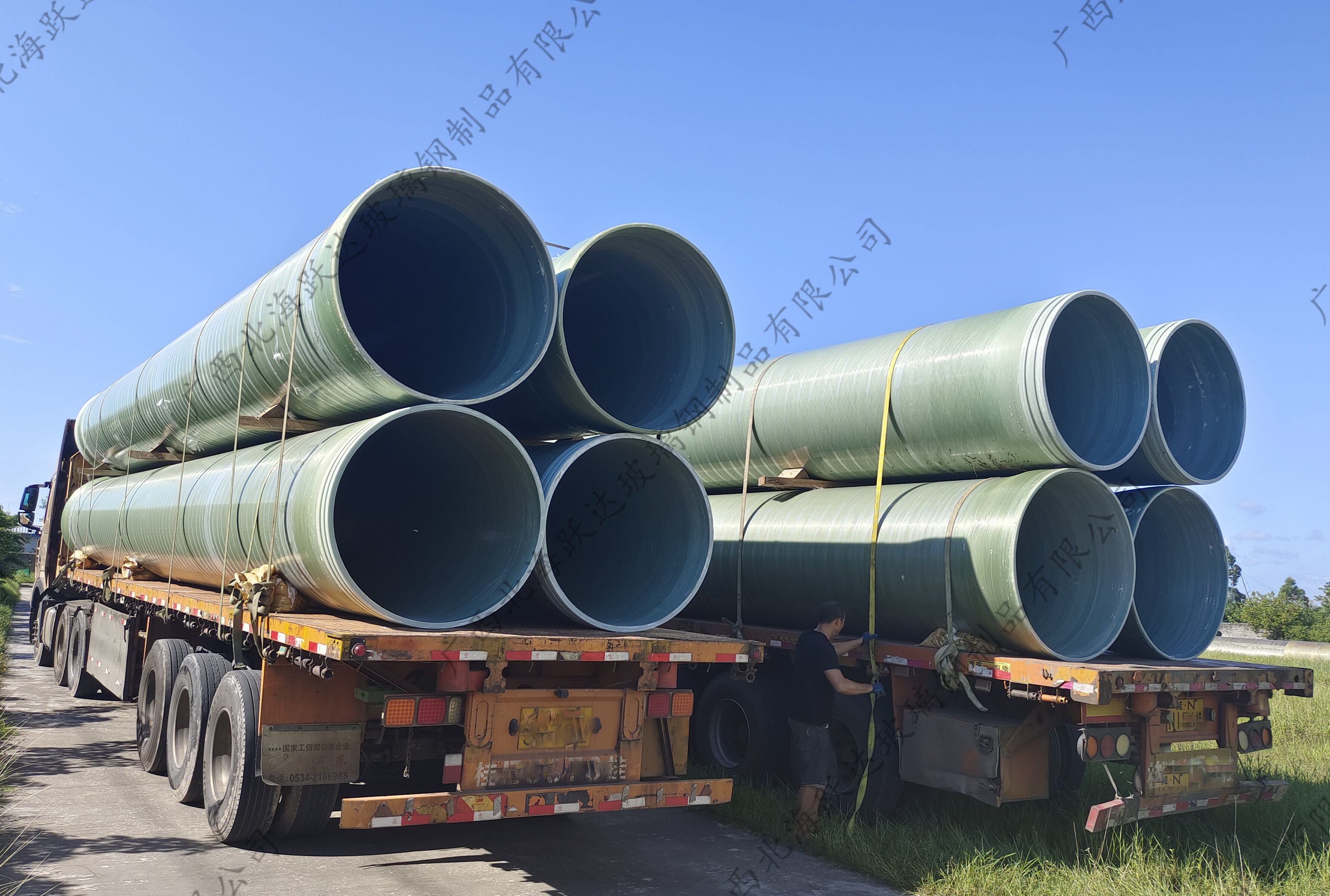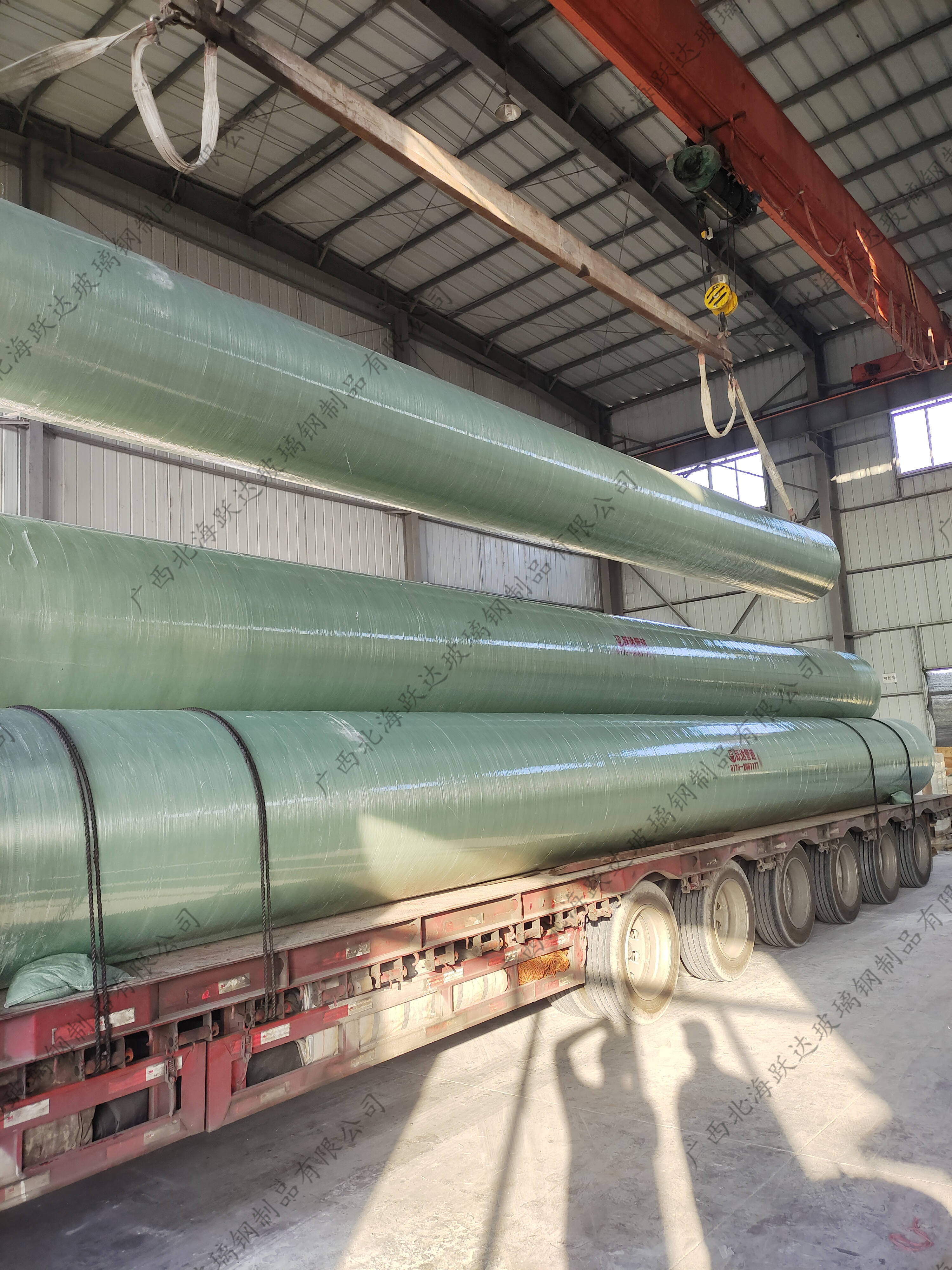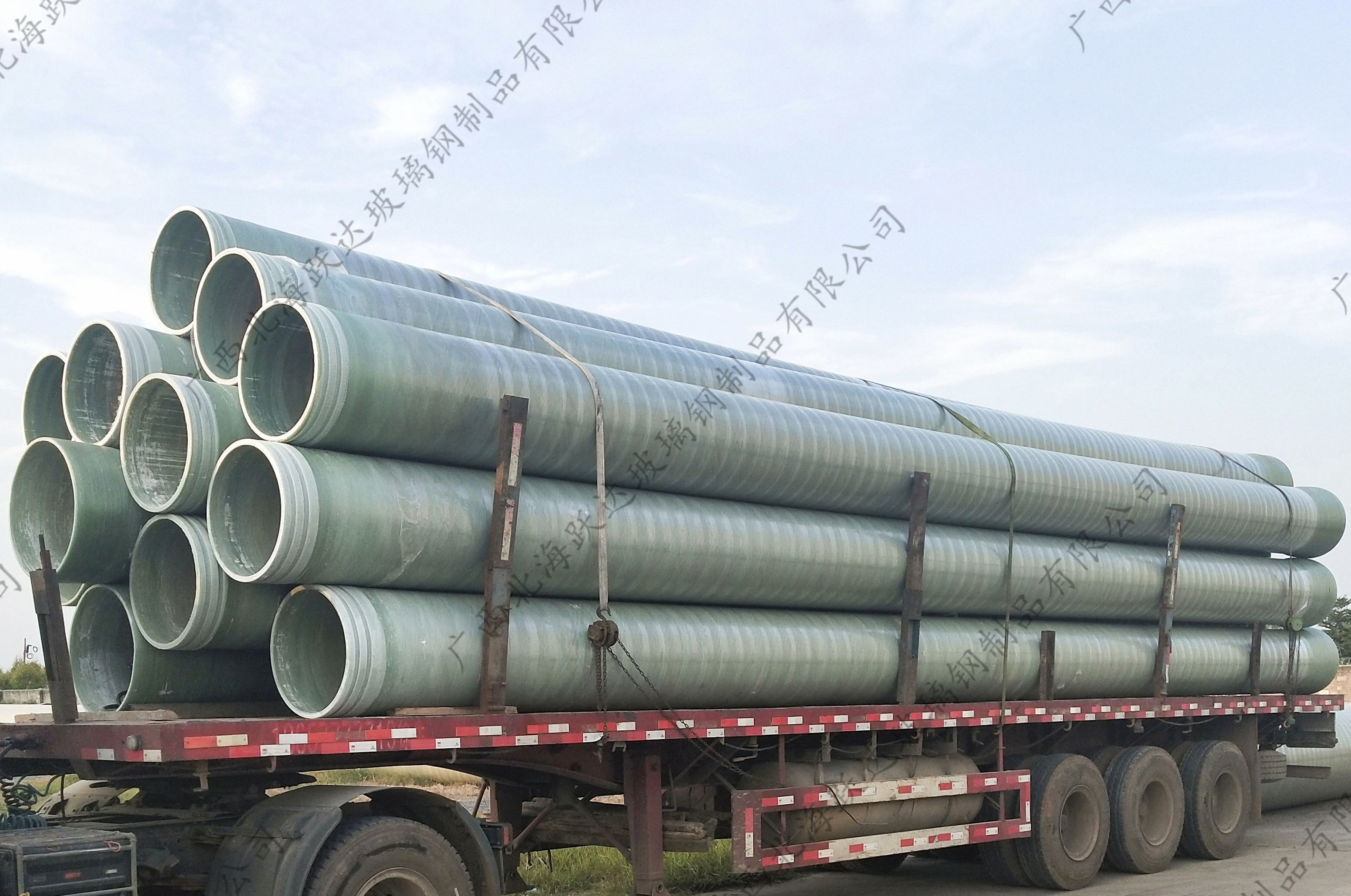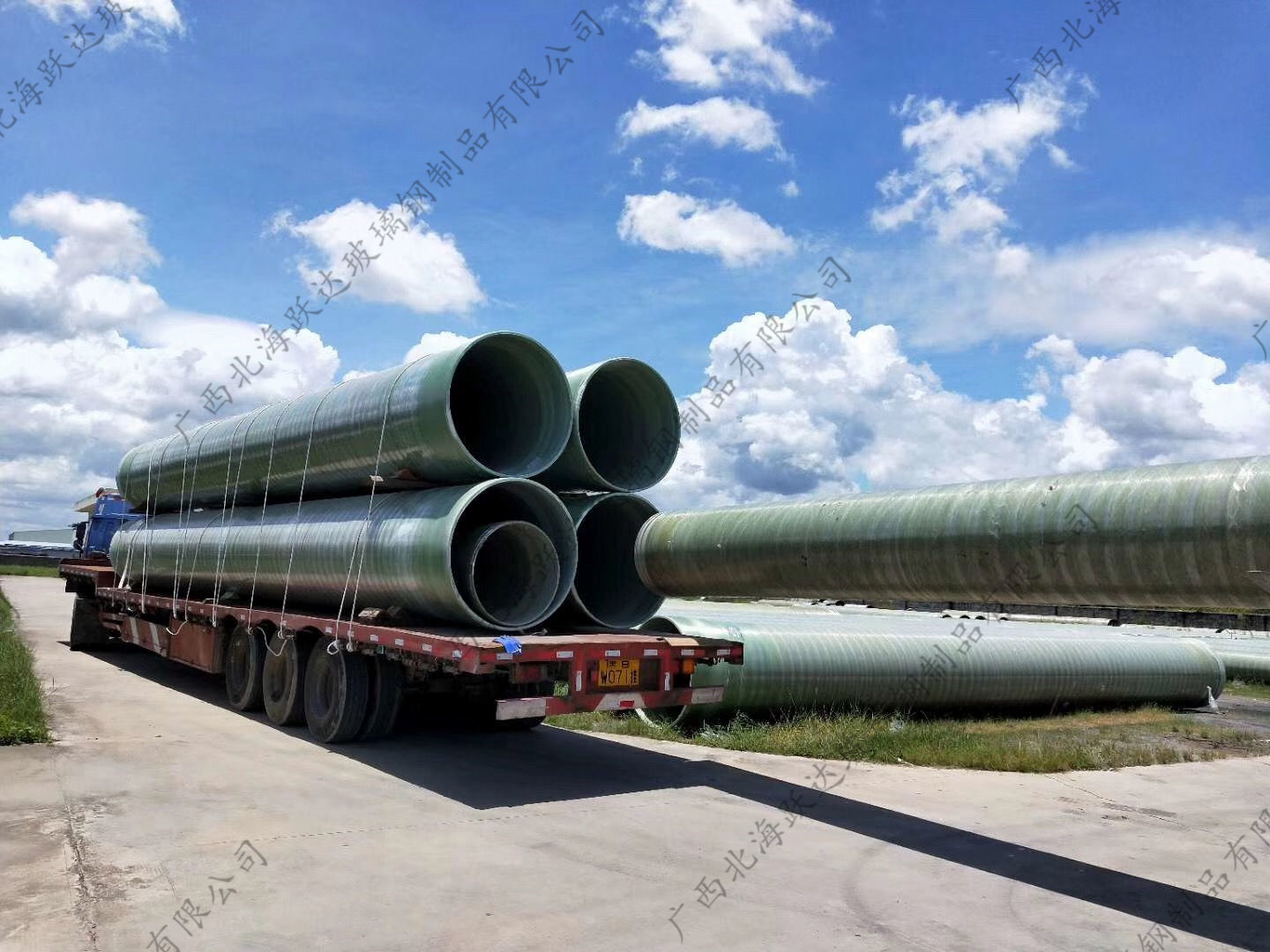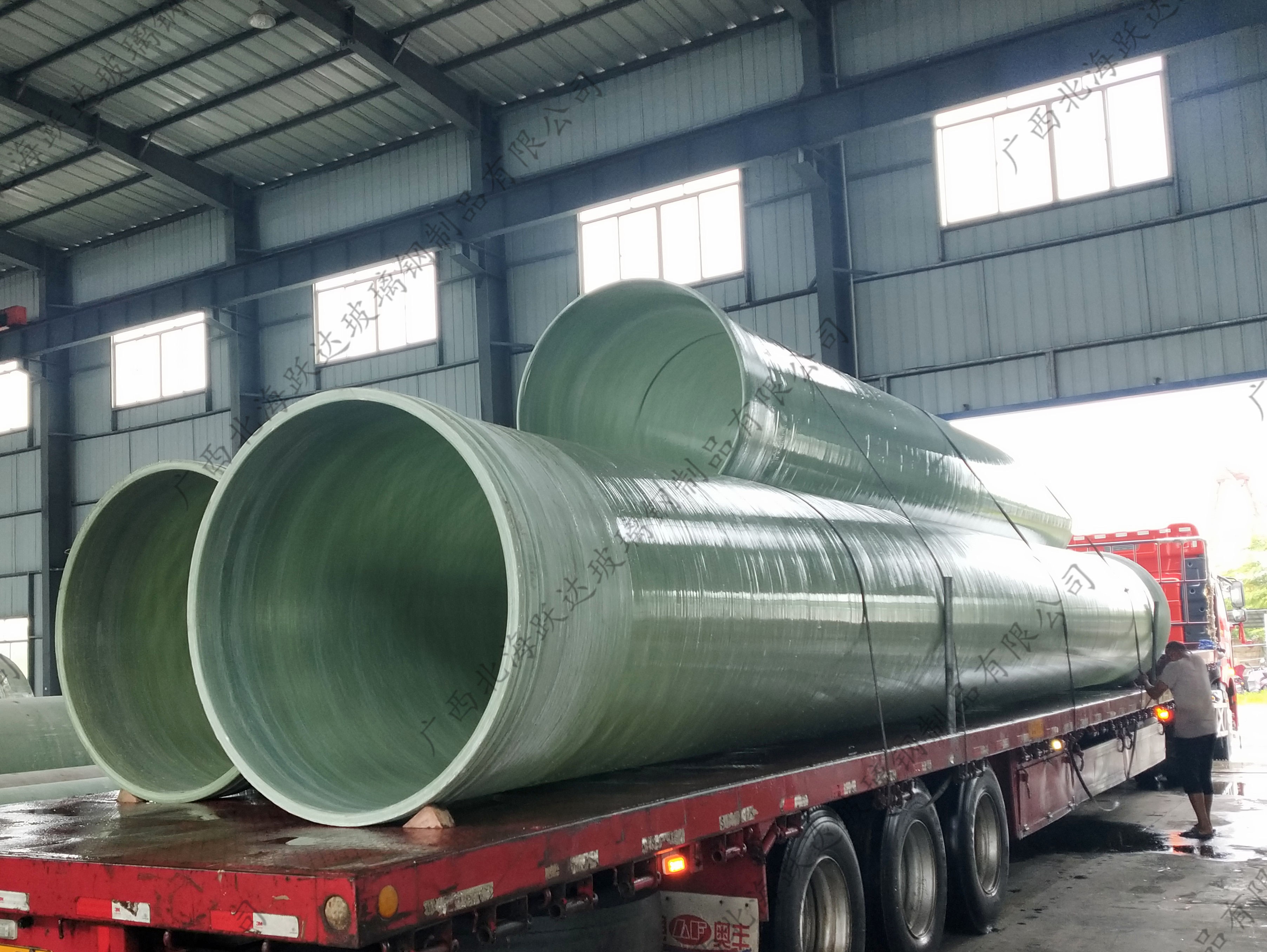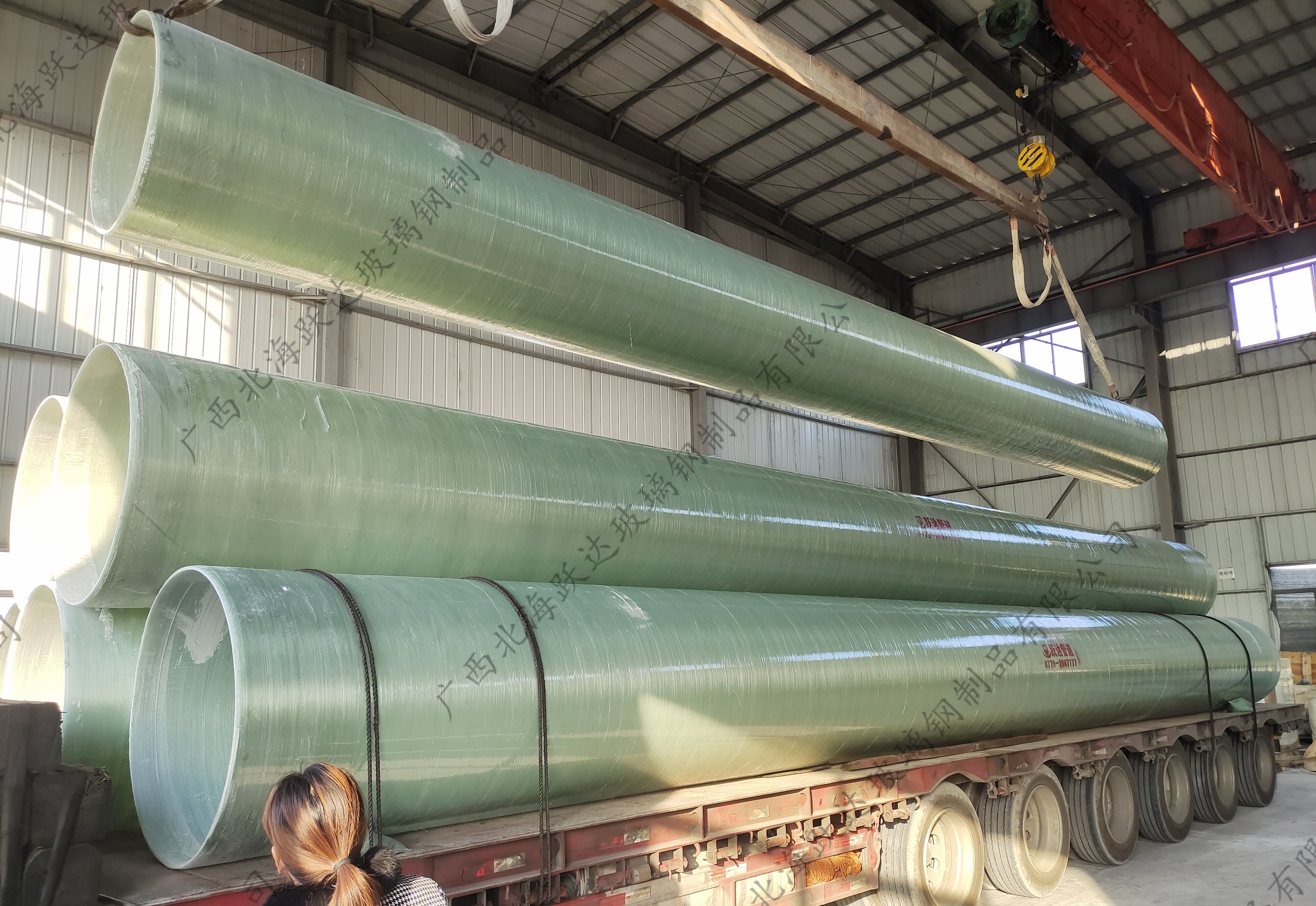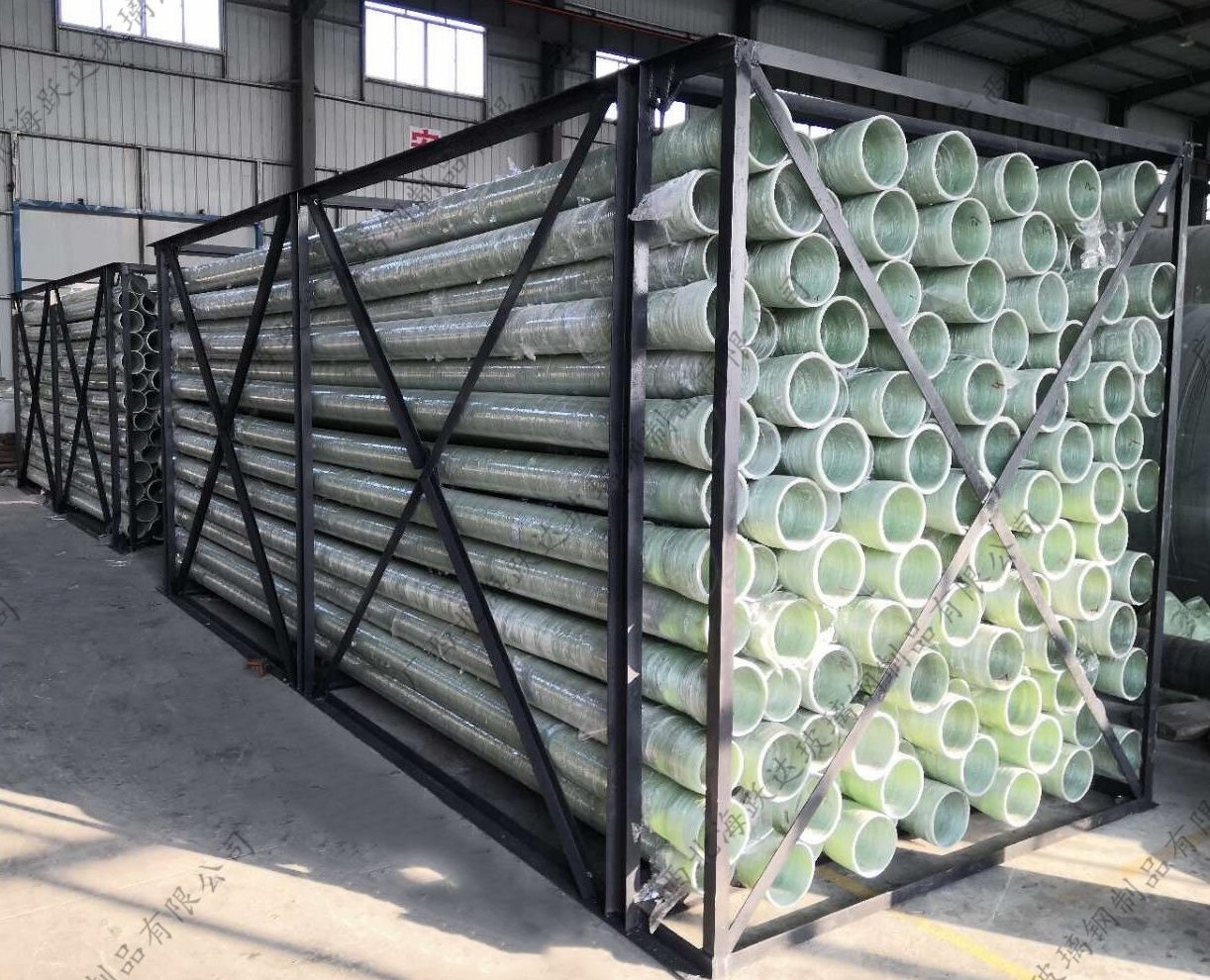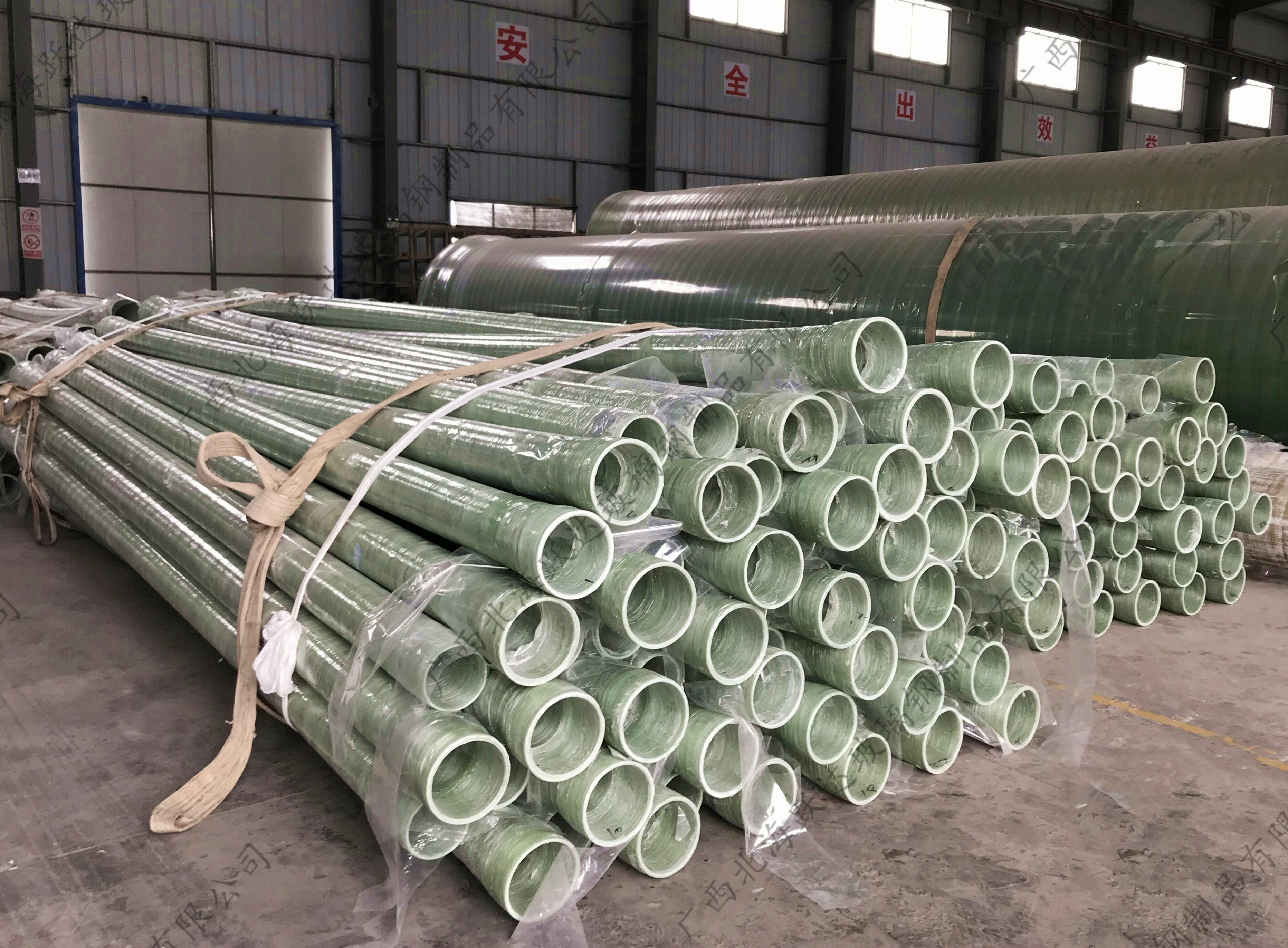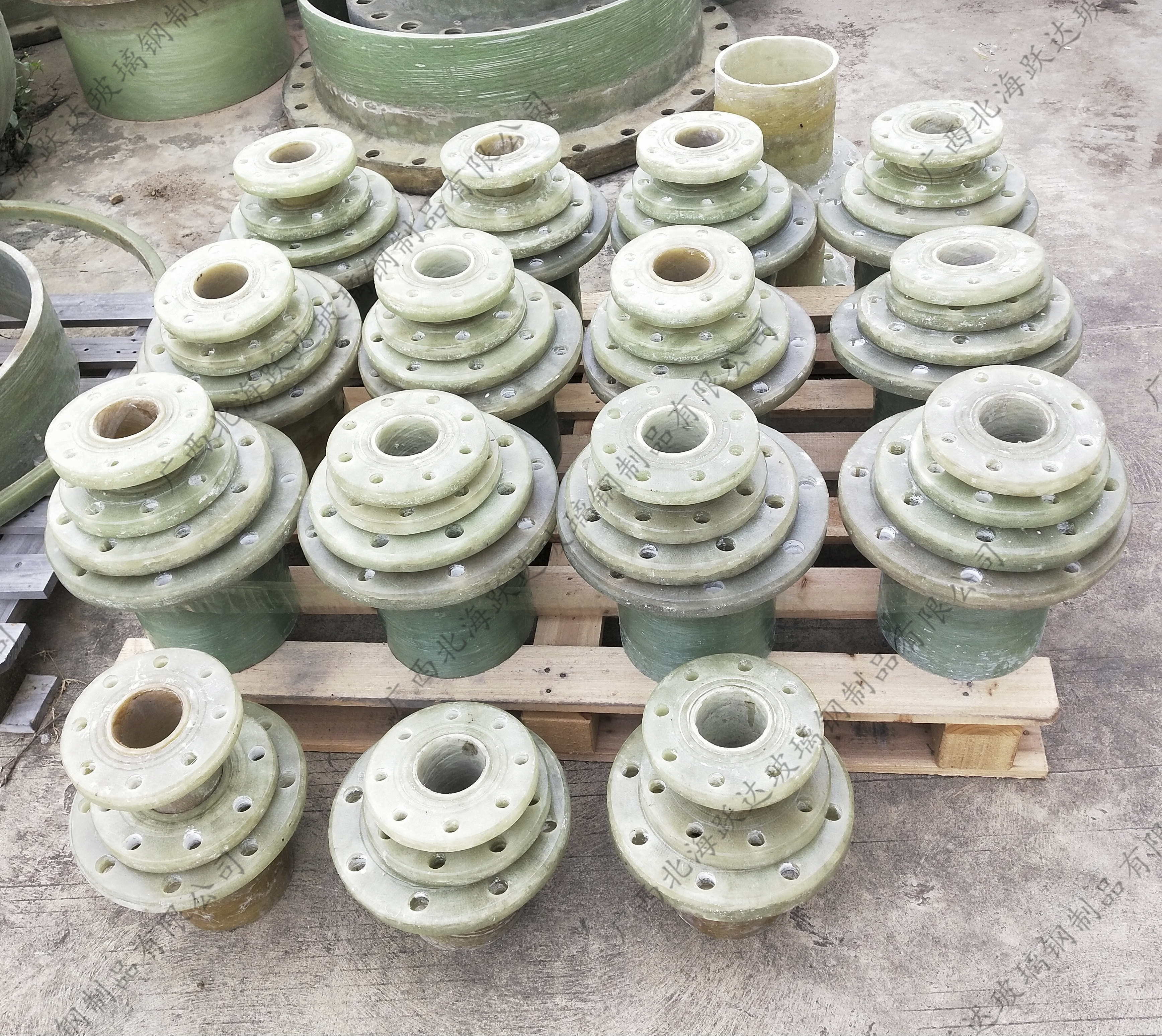Product classification
Fiberglass reinforced sand pipe
Fiberglass reinforced sand pipes are a new type of composite material made from resin as the matrix material, fiberglass and its products as the reinforcing material, and quartz sand as the filling material. With its excellent corrosion resistance, hydraulic characteristics, lightweight and high strength, large flow capacity, easy installation, short construction period, and low overall investment, it has become the best choice for the chemical industry and drainage projects.
Fiberglass reinforced plastic (FRP) process piping
1. Excellent Characteristics of Fiberglass Reinforced Plastic (FRP) Pipes
1. Lightweight and High Strength:
① Lightweight: The specific gravity of fiberglass pipes is about 1.6, which is only 1/4 to 1/5 that of steel or cast iron pipes. Practical applications show that under the same internal pressure, fiberglass pipes of the same diameter and length weigh about 30% of that of steel pipes. Because of this, fiberglass pipes can be transported in a nested manner, saving fuel and other costs. During installation, medium and small diameter fiberglass pipes generally do not require heavy machinery; some can even be handled manually, which increases installation speed.
Fiberglass reinforced plastic sewage pipe
Advantages of fiberglass sewage pipes:
1. Excellent corrosion resistance
It has excellent mechanical properties and processing characteristics, resistant to most untreated wastewater from acids, alkalis, salts, seawater, corrosive soils, or groundwater, and many chemical substances.
2. Good heat and cold resistance
It still has good toughness and high strength at -30°C, can be used for a long time in the range of -50°C to 80°C, and special formula resins can even be used at 110°C.
Fiberglass reinforced plastic water supply pipeline
The length of sandwiched fiberglass pipes is generally 12 meters per piece, as well as any length within 12 meters.
Fiberglass reinforced plastic pressure pipeline
Characteristics of fiberglass pressure pipelines:
● Corrosion-resistant: Different corrosion-resistant pipelines can be selected according to the requirements of the medium in a complex environment.
● Pressure-resistant: Pipelines and fittings are designed and manufactured according to the pressure requirements of the process. A pressure test is conducted at 1.5 times the required process pressure.
● Heat-resistant: Can withstand low temperatures of -70°C and high temperatures of 250°C.
● Good insulation performance, and can eliminate static electricity after modification;
● Good flammability, and can be self-extinguishing, flame-retardant, and fire-resistant after modification.
● Good transparency, and can present various colors after modification.
● Insulation performance can be improved to enhance thermal conductivity after modification.
Fiberglass reinforced plastic (FRP) pipes have reliability, safety, and economic benefits, mainly used for underground pipes and long-distance pipelines. Their characteristics include:
1. Lightweight and high strength: The specific gravity of fiberglass sand pipes is 1.65 to 2.0. For the same pipe diameter, the weight per unit length is only 1/3 of carbon steel, 1/5 of cast iron pipes, and 1/10 of prestressed concrete pipes, which reduces lifting costs and increases installation speed during construction.
2. Good hydraulic properties: This characteristic is particularly prominent in the field of water supply and drainage, with excellent hydraulic properties.
(1) It can save pumping costs for the pipeline network.
(2) It reduces pipe diameter sizes.
(3) It shortens pumping time.
(4) FRP pipes do not scale during long-term water transport, eliminating the need for cleaning and preventing secondary pollution of water quality.
3. Good water resistance and corrosion resistance: The corrosion resistance of fiberglass sand pipes is excellent, reducing anti-corrosion costs and extending service life; at the same time, they do not rust, ensuring that the water quality during transport is not subject to secondary pollution. They can also be used to transport sewage, sludge, seawater, and other media.
4. Pressure resistance: Pipes and fittings are designed and manufactured according to the required pressure, and undergo a water pressure test at 1.5 times the required pressure.
5. Good interface sealing, no leakage, and no cracking, which increases the safety and reliability of water supply.
6. Non-toxic, suitable for transporting drinking water.
Fiberglass cable protection pipe
Fiberglass cable protection pipes are a new type of composite material pipes, made of resin as the matrix and fiberglass as the reinforcing material. They are bonded and formed with unsaturated resin, resulting in high-quality conduits that are compatible with modern cable engineering construction. These pipes have strong pressure resistance, lightweight, smooth inner walls, and low friction coefficients, making it easy to pull cables without damaging them. They are easier and more convenient to move and transport compared to metal steel pipes and cement pipes. The installation is simple, saving both time and effort. They have strong corrosion resistance, are insulating, non-magnetic, acid-resistant, alkali-resistant, flame-retardant, and anti-static. The bending elastic modulus is good, completely solving the issues of metal steel pipes being prone to corrosion and lacking torsional elasticity, while also overcoming the shortcomings of plastic pipes being prone to aging and having poor impact resistance. They have good water resistance and can be used for a long time in humid or underwater conditions without deterioration. Due to the specific properties of fiberglass, these pipes have a service life of over 50 years. They are easy to install, and their efficiency is particularly prominent in emergency repairs for specific projects. They are the ideal protective device for power cable projects, communication cable municipal projects, and underground cable laying on roads, especially suitable and lightweight for crossing rivers and bridges.
1. Main Features of FRP Cable Ducts
◎ High strength, suitable for direct burial under traffic lanes without the need for additional concrete protection layers, which can accelerate construction progress.
◎ Good toughness, able to resist damage caused by external heavy pressure and foundation settlement.
◎ Excellent electrical insulation, flame retardant, and heat resistance, can be used at high temperatures of 130 degrees for long periods without deformation.
◎ Corrosion-resistant with a long service life, can withstand erosion from various corrosive media such as acids, alkalis, salts, and organic solvents, with a lifespan of up to 50 years.
◎ Smooth inner wall that does not scratch cables. Rubber sealing rings at the joints facilitate installation and connection, adapting to thermal expansion and contraction.
◎ Lightweight with a small specific gravity, can be lifted by one person, and installed by two, significantly shortening the construction period and reducing installation costs, while avoiding prolonged exposure during road excavation that affects urban traffic order.
◎ No electrical corrosion, non-magnetic. Unlike magnetic materials such as steel pipes, which generate eddy currents that can cause cable overheating and damage.
◎ Wide application range: FRP cable protection ducts are suitable for protecting cables during underground installation, as well as in high-demand situations such as crossing bridges and rivers. With the use of matching professional pipe supports, they can form multi-layer and multi-column duct arrangements.
2. Connection Methods for FRP Cable Ducts
FRP cable ducts mainly use "O"-ring sealing for socket connections; flanges or adhesive connections can also be used in special locations.
3. Application Fields of FRP Cable Ducts
FRP cable protection ducts are suitable for protecting power and communication cables in various environmental installations. Especially in special environments such as cable crossings at traffic intersections and over rivers or bridges, their ease of construction and high strength can be fully demonstrated, widely applied in infrastructure construction fields such as power, communications, transportation, and civil aviation airports.
1. High intensity: The circumferential strength ranges from 150 MPa to 320 MPa, allowing for the design and manufacture of pipes with different pressure ratings and stiffness levels.
2. High rigidity and high strength: Can adapt to soil layers at different depths and under different load conditions.



